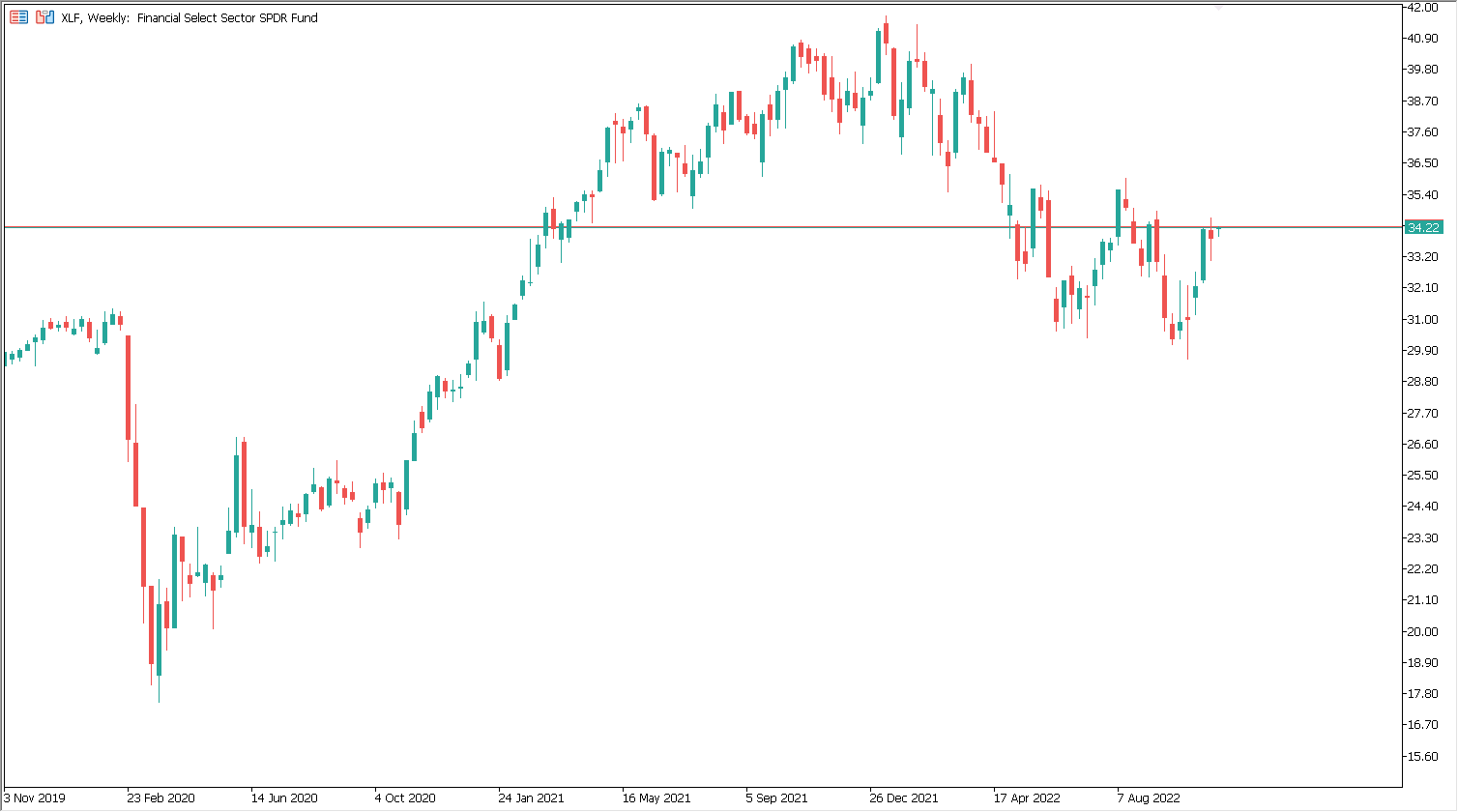One of the largest export products of the U.S. economy is capital goods, which, according to Trading Economics, accounts for as much as 19% of exports. Wanting to gain exposure to this particular sector of the market, we looked at a fund that we could use to do so.
ETF: Financial Select Sector SPDR Fund
As we can learn from the prospectus of the passive composition of the Financial Select Sector SPDR Fund (XLF), it is designed to reflect the performance of the financial and peri-financial sector through holdings in the largest players in this market. From the fund's prospectus, we learn that the fund is designed to reflect the behaviour of an index:
“The index seeks to effectively represent the financial sector of the S&P 500 index.
- It seeks to provide accurate exposure to companies engaged in:
- diversified financial services;
- Insurance;
- banks;
- capital markets,
- investment trusts,
- mortgage real estate ("REIT");
- consumer finance; and credit institutions and mortgage finance”.
Banks have the largest share by industry in XLF, accounting for 33.69% of exposure. In second place are companies in the capital markets sector, accounting for 27%, and the third-largest share is insurance companies (20.1%). The entire fund consists of 66 companies, of which the largest 5 companies in terms of share size account for as much as 38.86% of the fund's portfolio value. This could pose a potential risk of making the fund's performance dependent on the largest players.
The fund currently has $31.5 billion under management and has achieved an average annual return from the perspective of the last 10 years of 11.24%, including a paid annual profit distribution (dividend) of 2.44%.
The fund's average risk, as measured by the level of volatility (standard deviation), was 26.01% per year, relative to the broad market, where it was 24.78%. In addition, the correlation to the S&P 500 index (US500) was 0.93. Such a high correlation may be due to the significant share of banks in the S&P 500 index.
 Source: Conotoxia MT5, XLF, Weekly.
Source: Conotoxia MT5, XLF, Weekly.
Financial sector outlook
Now in an era of monetary tightening with the Fed raising interest rates, which have risen from 0.25% to, as much as, 4% since the beginning of the year, it seems that banking sector earnings could positively affect its valuation. Rising interest costs seem to have a direct impact on the banking sector's earnings growth, as we have seen from the recent performance period. However, since the beginning of the year, the fund's value has fallen by 16.8% (versus an 18.08% loss for the broad market index). In addition, the announcement of further interest rate hikes may have a positive impact on the valuation of the banking sector in the long term.
Author: Grzegorz Dróżdż, a Market Analyst of Conotoxia Ltd. (Conotoxia investment service)
Materials, analysis and opinions contained, referenced or provided herein are intended solely for informational and educational purposes. Personal opinion of the author does not represent and should not be constructed as a statement or an investment advice made by Conotoxia Ltd. All indiscriminate reliance on illustrative or informational materials may lead to losses. Past performance is not a reliable indicator of future results.
CFDs are complex instruments and come with a high risk of losing money rapidly due to leverage. 75,21% of retail investor accounts lose money when trading CFDs with this provider. You should consider whether you understand how CFDs work and whether you can afford to take the high risk of losing your money.


